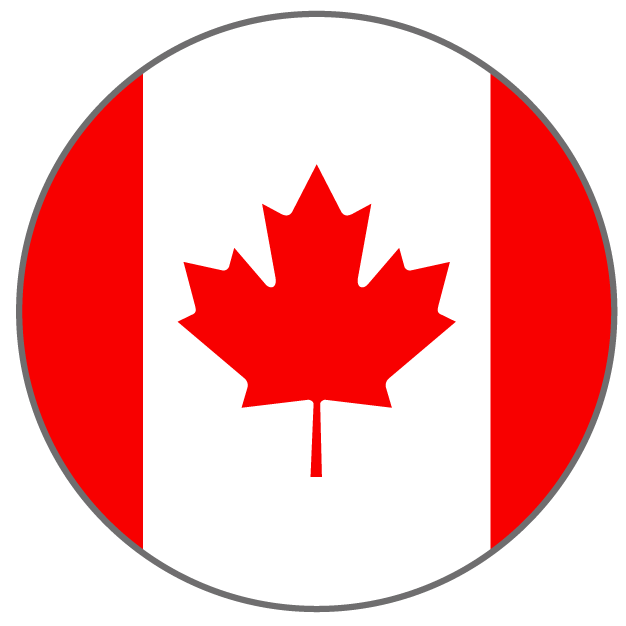Highlights
- Risk appetite is improving as debt ceiling and banking concerns subside.
- Bank of Canada and Reserve Bank of Australia go against consensus with June rate hikes and look set to move again in July.
- Fed expected to skip June hike but raise rates in July.
- Resilient data suggest economic slowdown will come later than we expected.
- Inflation could continue to frustrate central banks beyond the current cycle.
Risk appetite is picking up after down-to-the-wire negotiations punted the U.S. debt ceiling issue into 2025. Banking concerns have also come off the boil, with U.S. regional bank equities hitting a one-month high. The broader S&P 500 index is closing in on last summer’s peak, aided by a rally in tech stocks. Growth outperformed value in May despite rising government bond yields that contributed to the underperformance in growth stocks last year. The Fed looks set to take a pass on raising rates in June. But with policymakers talking about a “skip” rather than a pause, we expect a July hike.
What about the BoC’s pause? It survived only two meetings. And we think its off-consensus June hike will be followed by another increase in July. We also look for the Bank of England, European Central Bank, and RBA to raise rates at their next policy meetings. For each of these central banks, we think risks are skewed toward more tightening than less. And with policy rate expectations rising, the front end of the yield curve has underperformed and inversion has deepened.
While we’ve seen some signs of policy traction, higher interest rates haven’t slowed economic activity as much as we expected in the first half of the year. So far, falling job vacancies are taking some of the heat out of labour markets without much of an increase in unemployment. But we continue to think jobless rates will have to rise from record lows to rein in wage growth and services inflation. Additional policy tightening and the ongoing effects of earlier rate increases suggest that while a slowdown will be delayed, it won’t be avoided.
We now look for modest GDP declines in Canada and the U.S. in the second half of this year and in the euro area in the first half of 2024. The UK and Australia are expected to see only modest gains for the remainder of 2023. Sub-trend growth should help dial back inflationary pressure, allowing most central banks to meet their inflation targets next year. But a number of longer-term price pressures could cause inflation frustration beyond the current cycle. That suggests policymakers will have to keep interest rates higher relative to the exceptionally low rate environment that characterized much of the past 15 years.
Central bank bias
Central Bank
Current Policy Rate
(Latest Move)
Next move
 BoC
BoC
4.75%
+25 bps in Jun-23
+25 bps
in Jul-23
 Fed
Fed
5.00-5.25%
+25 bps in May-23
+25 bps
in Jul-23
 BoE
BoE
4.50%
+25 bps in May-23
+25 bps
in Jun-23
 ECB
ECB
3.25%
+25 bps in May-23
+25 bps
in Jun-23
 RBA
RBA
4.10%
+25 bps in Jun-23
+ 25bps
in Jul-23
Central banks aren’t done yet
The BoC has been proactive throughout this tightening cycle. It maintained that approach in June, lifting the overnight rate by 25 bps when only a handful of analysts were looking for such a move. The case for a hike was clear after stronger-than-expected Q1 GDP, an upside surprise on April inflation, still-firm jobs data and a rebound in housing. But with Bank of Canada Governor Tiff Macklem sounding like he was in no rush to raise rates in mid-May, we thought the BoC would extend its pause, waiting until July when more data had accumulated. But June’s policy statement suggested little hesitation to come off the sidelines, and we expect another 25 bp hike in July. There is plenty of data in the five-week window ahead of that meeting, but we think those indicators will have to show a decisive softening for the BoC not to raise rates. Risks around our updated 5% terminal overnight rate forecast are still skewed to the upside but we think there will be enough evidence of policy traction by the September meeting for the BoC to resume its pause.
Robust job gains, still-firm core inflation, and resilient U.S. consumers appear to have tipped a number of Fed officials toward another hike. But expectations for a June increase took a blow when committee members began talking up a “skip” that would give the Fed more time to review incoming data and judge the fallout of recent banking turmoil. We continue to think the U.S. economy is headed for a slowdown, but the data isn’t deteriorating quickly enough to prevent a July rate hike. Market pricing is also pointing in this direction. With terminal fed funds being reached later than we previously assumed, we no longer see the Fed cutting rates this year.
UK inflation once again surprised to the upside with core inflation accelerating to a fresh cycle high in April. Pay growth shows few signs of slowing—though cracks are beginning to emerge in the labour market as job vacancies decline and the unemployment rate inches higher. That’s not enough for the BoE to declare “job done” and we’ve added a June rate hike to our forecast. The market sees the BoE going even further, pricing in nearly three more hikes after June. Setting policy on a meeting-by-meeting basis, our forecast assumes the Monetary Policy Committee will see enough slowing in inflation over the summer to keep it from following the more aggressive market path for the Bank Rate.
The RBA surprised consensus and the market with a second consecutive cash rate hike in June. The Board framed the increase as a response to greater upside risks to inflation, with higher rates needed to ensure it will return to target within a reasonable timeframe. Despite early signs that the employment backdrop is softening, the statement noted a pickup in wage growth and a higher minimum wage, fueling concerns about a wage-price spiral. Unit labour costs were up nearly 8% year-over-year in the first quarter. With a clear tightening bias, we expect another rate hike in July will take the terminal cash rate to 4.35%.
Both headline and core euro area inflation surprised to the downside for the second time in three months in May, though ECB President Lagarde cautioned it’s too early to declare a peak in core inflation. With unemployment in the currency bloc continuing to plumb new lows (6.5% in April) and PMI data pointing to solid growth in the services sector, the ECB remains concerned about domestic inflationary pressure. We think Lagarde’s comments support our forecast for further rate hikes over the summer with the deposit rate expected to plateau at 3.75% following July’s meeting. At that stage, we think a peak in core inflation will be clear enough for the ECB to move to the sidelines.
Box: Inflation frustration could outlast this cycle
While central banks still have some work to do to rein in inflation, we think they will ultimately be successful in getting it back to target—in most cases by the second half of next year. That will allow some, like the BoC and the Fed, to begin easing off the brakes, moving policy rates toward more neutral levels. Just how far they’ll go in cutting rates, and ultimately where monetary policy will settle beyond the next cycle, will be influenced by the medium-term inflation outlook. And there are reasons to think that central banks’ inflation frustration will outlast the current cycle. Demographics, deglobalization and decarbonization could act as sustained sources of price pressure, challenging a return to the subdued inflation that characterized much of the inflation targeting era thus far.
Abundant labour supply, along with other factors like falling unionization rates and growing global competition, helped contain wage bills as central banks began aiming for lower inflation in the 1990s. Even in the less trade-exposed services sector, average annual increases in unit labour costs were well below 2% in many advanced economies in the two decades prior to the pandemic. But labour force growth is slowing as Baby Boomers reach retirement age and the long-term increase in women’s labour force participation loses momentum. With the job market tightening, labour’s share of income has increased in recent years. Record low unemployment rates have fueled faster wage gains, though some of that cyclical wage pressure is likely to ease as an expected economic slowdown addresses some of the current imbalance between labour supply and demand. But demographic factors could make high job vacancies and low unemployment the new norm beyond the next downturn. Structurally firmer wage growth would limit the scope for central banks to keep monetary policy accommodative and test the economy and labour market’s capacity limits, as some did pre-pandemic.
The shift to inflation targeting in the 1990s coincided with an acceleration in globalization, a disinflationary force that helped central banks deliver low, stable inflation. But globalization has slowed and there are concerns that deglobalization could send that process into reverse, pushing goods prices higher. Politicians are espousing friend-shoring of critical value chains and adopting activist industrial policies to build out advanced manufacturing, while re-shoring and near-shoring are seen as potential solutions to supply chain vulnerabilities. Other efforts to build supply chain resilience, like diversifying suppliers or carrying more inventory, come with their own costs that could be passed on to consumers. Central banks might not be able to count on the subdued core goods inflation that helped them achieve inflation targets in the past.
And with the current bout of price pressure having jarred inflation expectations loose, central banks might be less willing to look through transitory shocks in volatile components like food and energy. Those shocks could become more frequent amid geopolitical tensions and underinvestment in fossil fuel production. Droughts exacerbated by climate change could increase volatility in food prices, as we saw last year. Stronger demand and constrained supply for critical metals and minerals, and growing pressure on power grids as electrification accelerates, could also contribute to price increases. The inflationary impact of carbon pricing is relatively limited—in Canada’s case, the BoC estimates domestic carbon pricing adds 0.1 ppt to inflation each year—but nonetheless moves in the same direction.
“Neutral” will provide more of an anchor for policy rates
We don’t think these medium-term price pressures (see box) will cause inflation to permanently deviate from central banks’ targets—and shifting those targets wouldn’t solve the problem. Instead, we think monetary policy will need to be much less accommodative, on average, than we’ve become accustomed to. Neutral interest rates—central banks’ estimates for the policy rate that is neither supportive nor restrictive—will act as a better anchor for policy rates than in the past two decades when policymakers rarely positioned rates at or above contemporaneous neutral estimates. Last cycle, for instance, fed funds peaked slightly below the Federal Open Market Committee’s long-run estimate of the appropriate policy rate, and the BoC’s overnight rate was a full percentage point below what was thought to be neutral at the time. That was despite unemployment rates in both countries falling to multi-decade lows, below most estimates of full employment. Even in the pre-Global Financial Crisis tightening cycle, the BoC kept monetary policy accommodative throughout and fed funds was still within the range of neutral estimates even at its peak.
Not only will neutral rates act as a better anchor, but the factors noted above putting upward pressure on inflation could also push neutral rates higher over time. Rising life expectancy has caused households to save more but Baby Boomers have progressed through their peak savings years and are increasingly reaching the dissaving years of retirement, a factor that could push savings rates lower and neutral rates higher. Deglobalization will arguably hurt productivity but could also prompt greater investment in advanced economies, increasing demand for funds and interest rates alongside. And as the IMF recently noted, financial fragmentation associated with deglobalization could put upward pressure on interest rates. Energy transition will also require significant investment and, to the extent governments are footing the bill without offsetting revenue support, could boost government debt and interest rates. Central banks that regularly reassess neutral interest rates have yet to revise their estimates higher but we think the bias will be upward in the coming years.
Download full PDF report including forecast tables:
This article is intended as general information only and is not to be relied upon as constituting legal, financial or other professional advice. A professional advisor should be consulted regarding your specific situation. Information presented is believed to be factual and up-to-date but we do not guarantee its accuracy and it should not be regarded as a complete analysis of the subjects discussed. All expressions of opinion reflect the judgment of the authors as of the date of publication and are subject to change. No endorsement of any third parties or their advice, opinions, information, products or services is expressly given or implied by Royal Bank of Canada or any of its affiliates.


 Learn More
Learn More